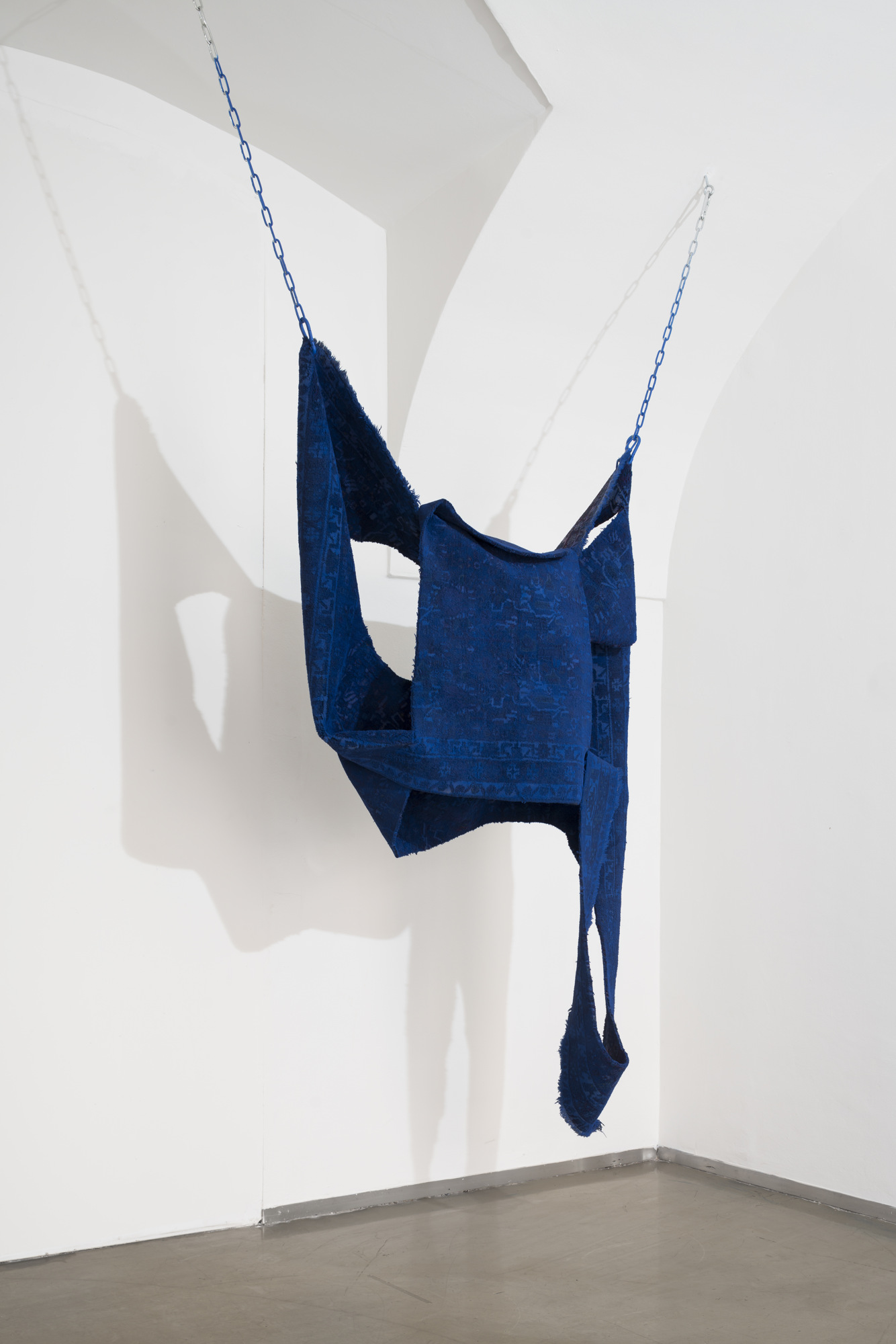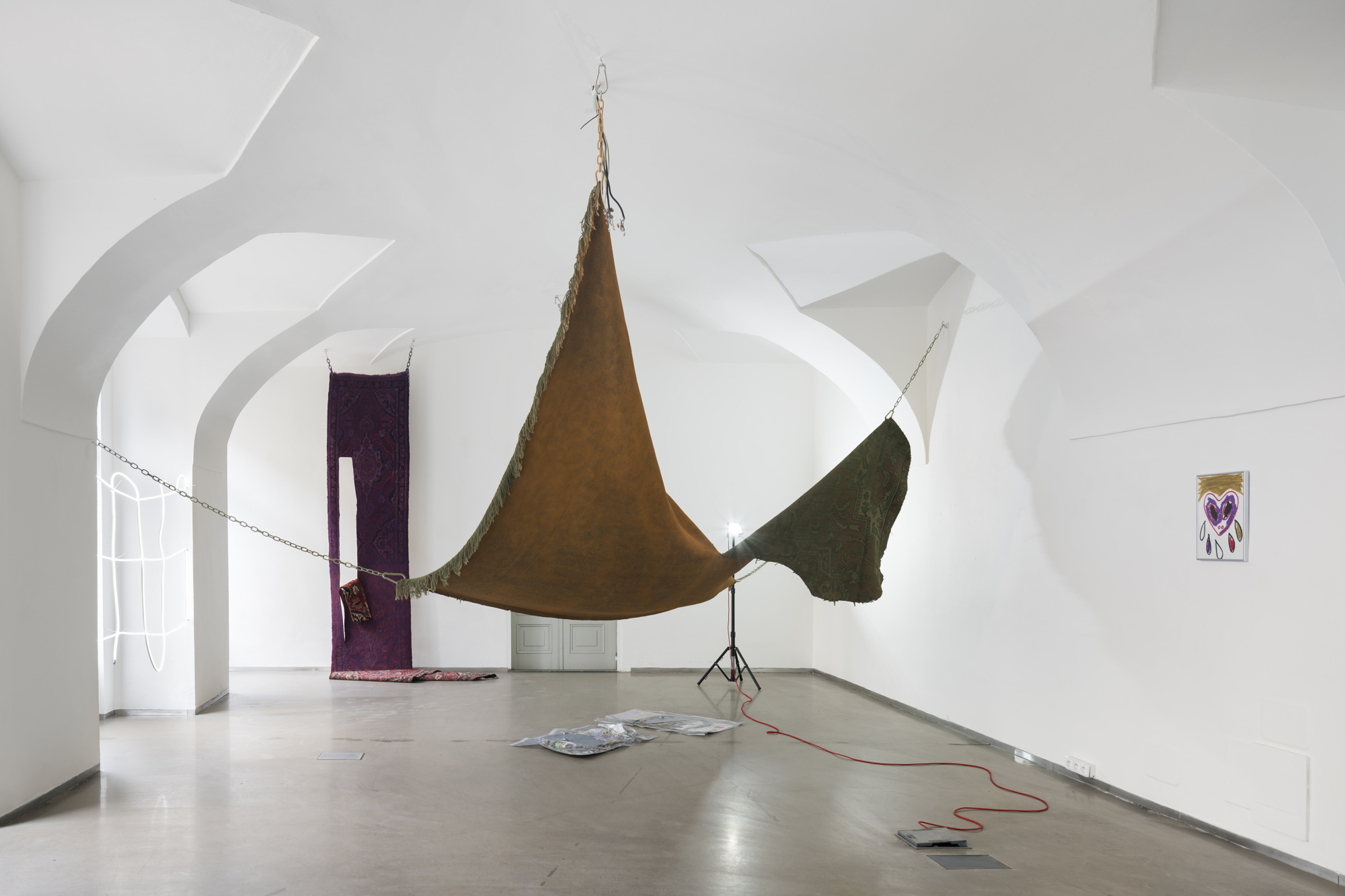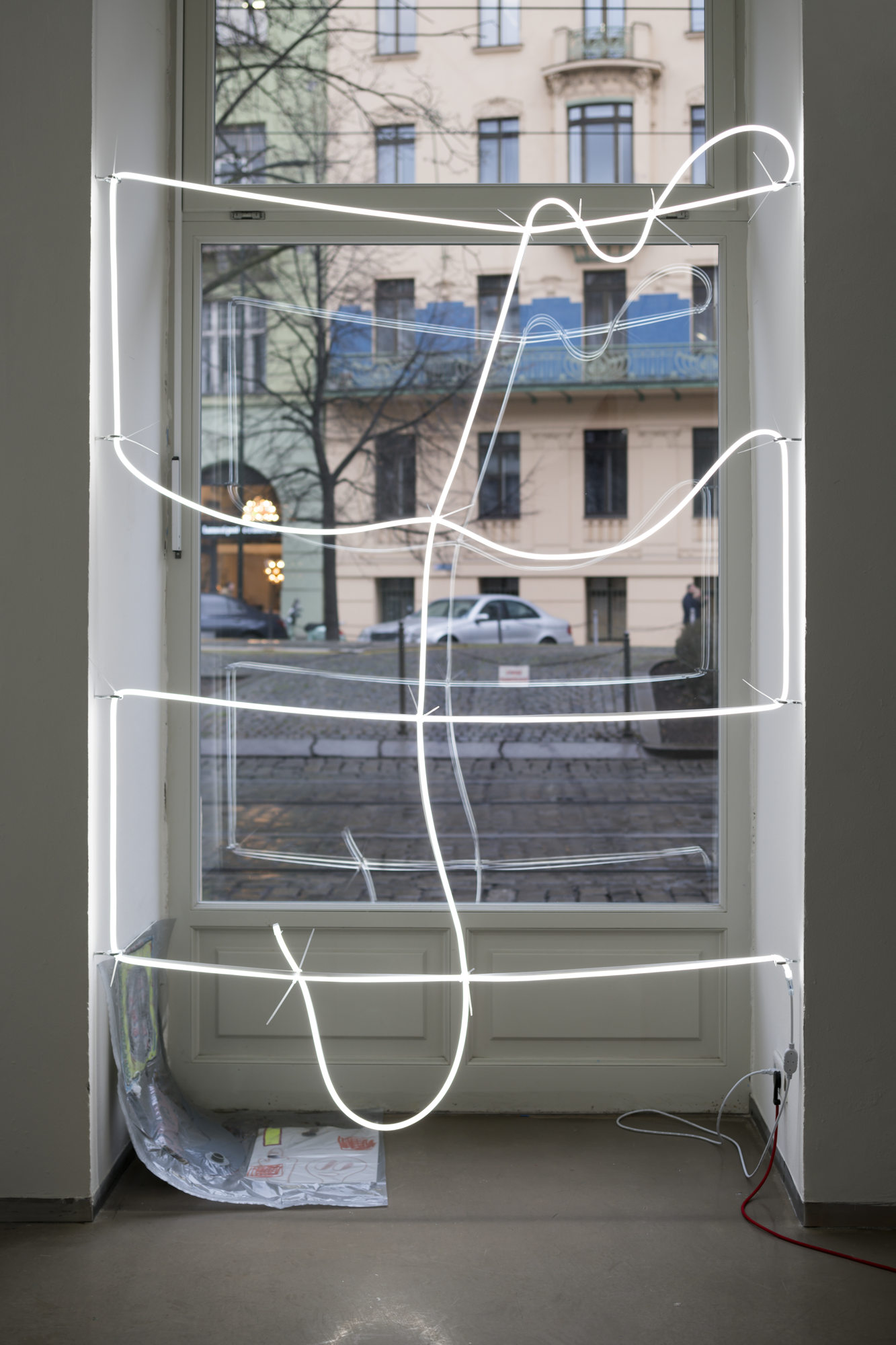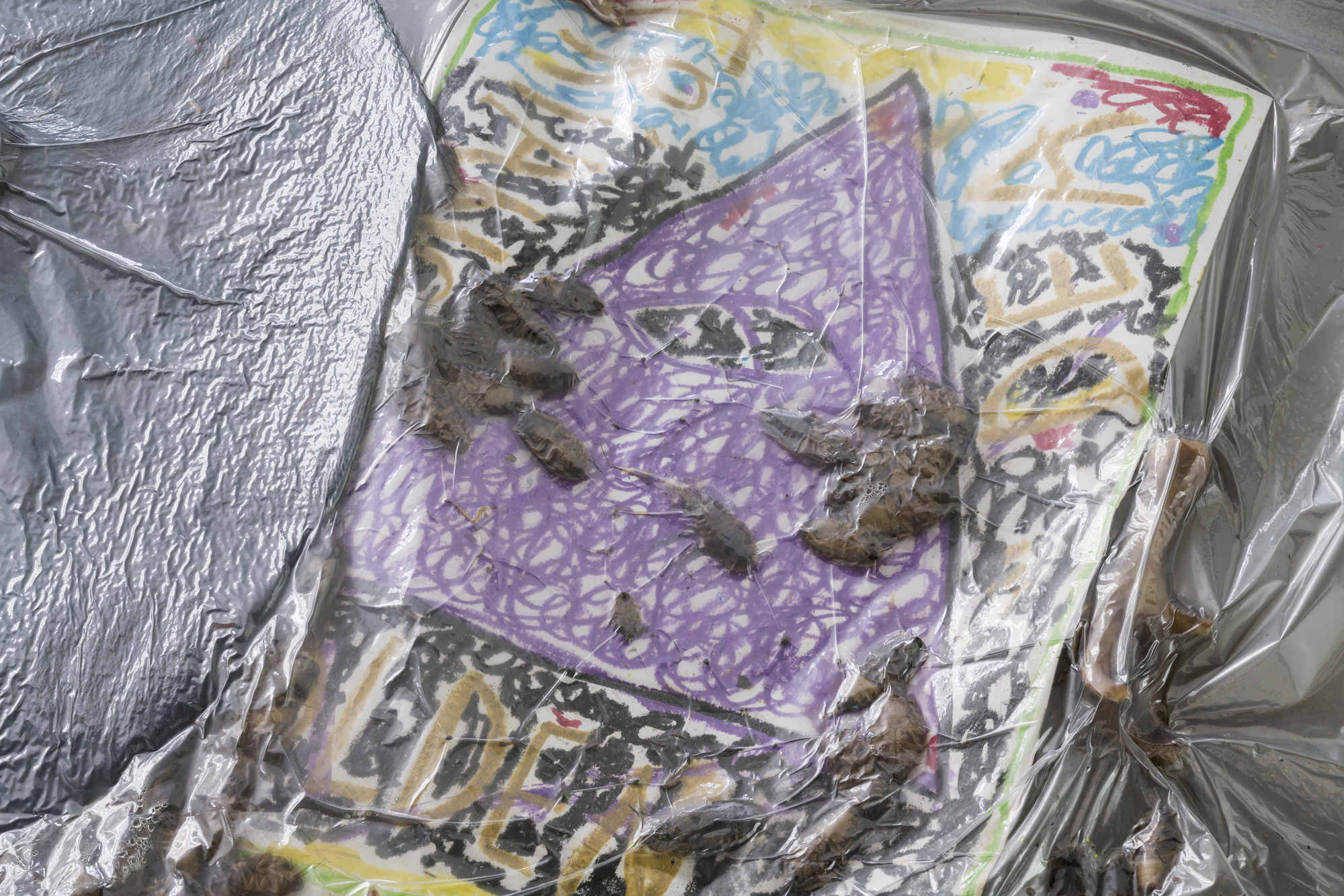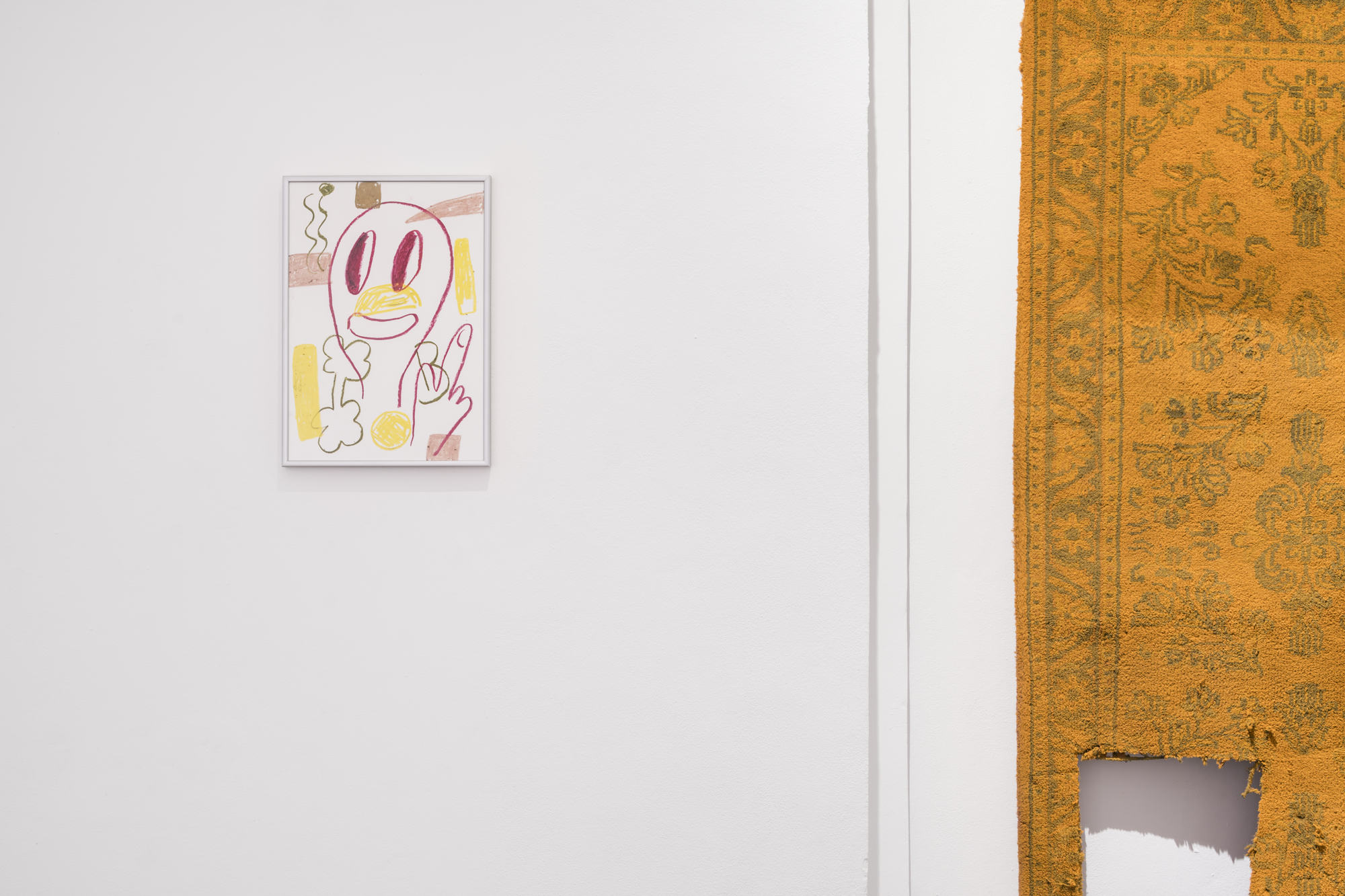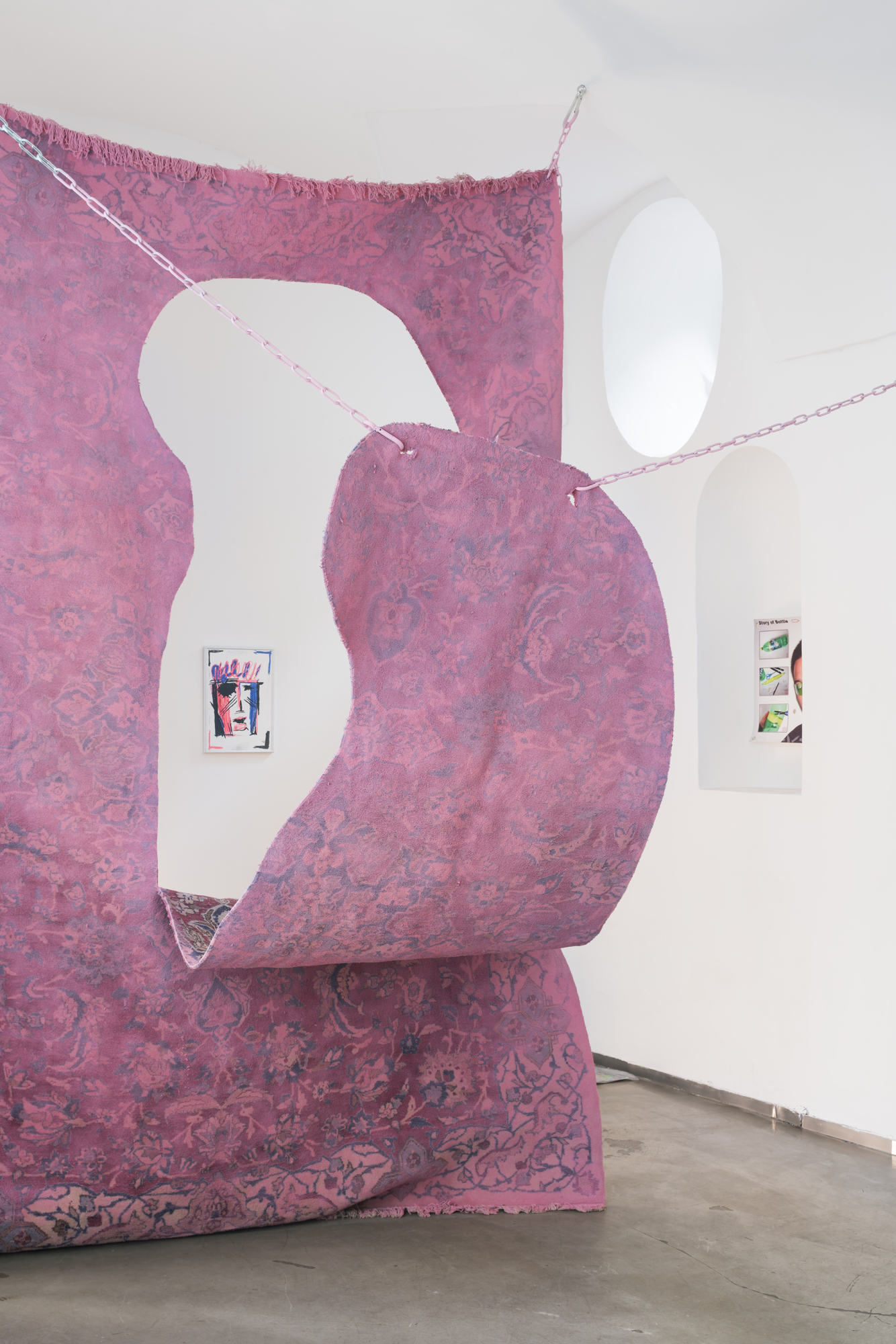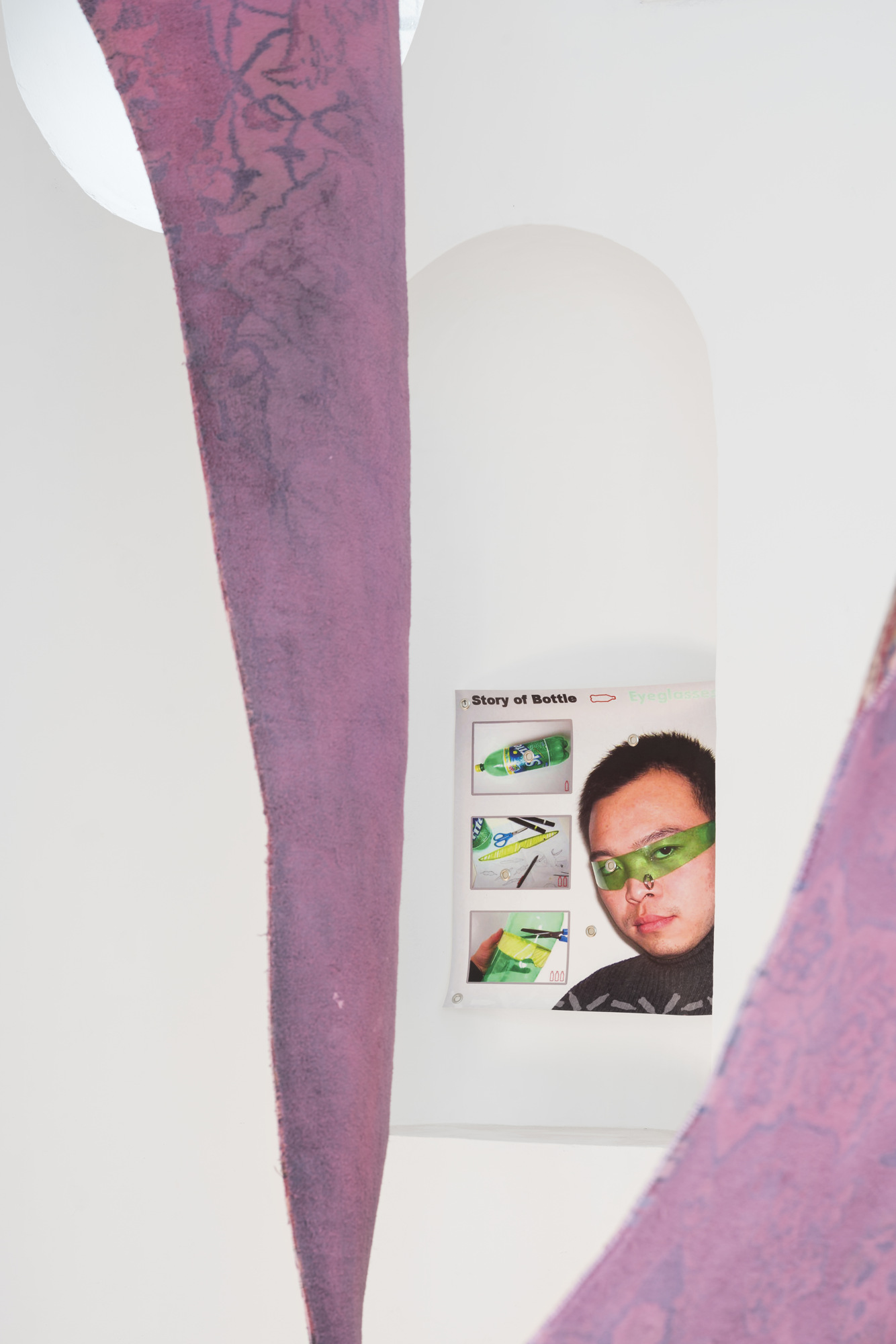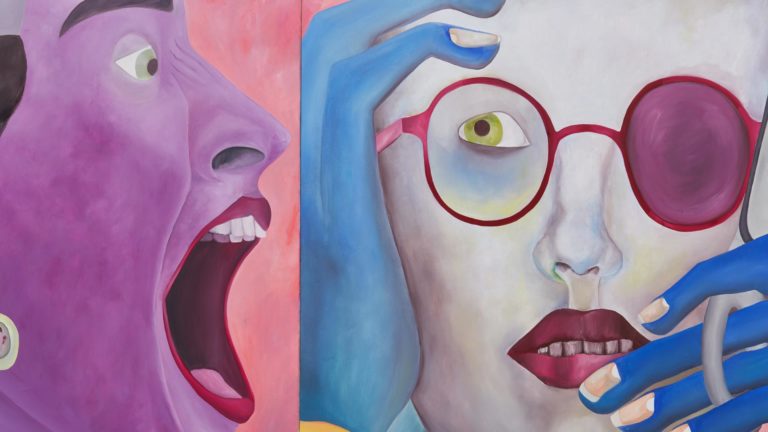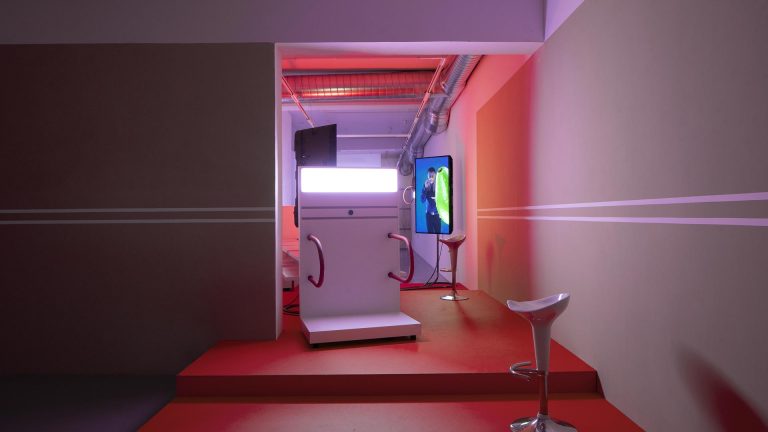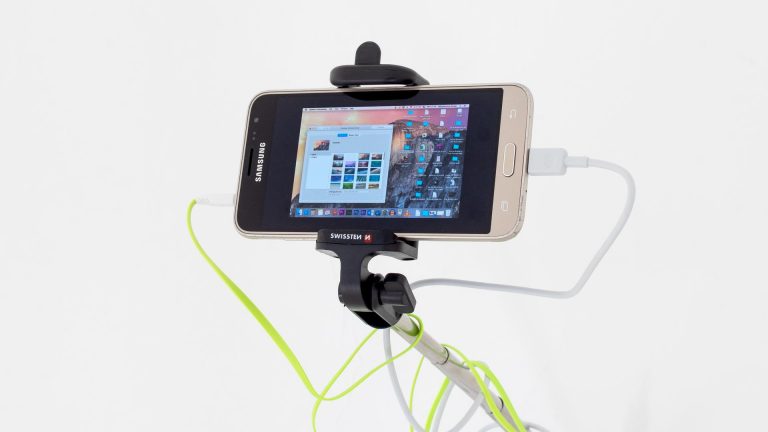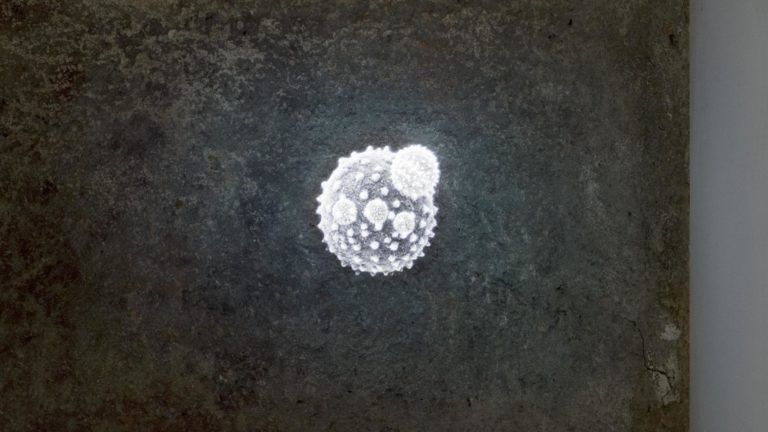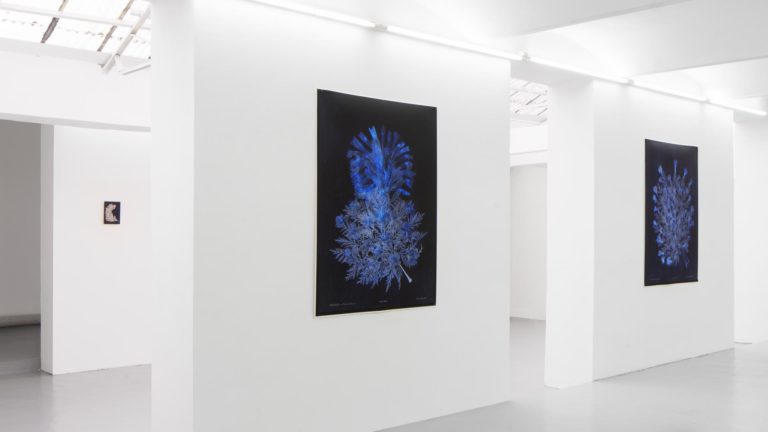Artists: Black Hole Generation (David Krňanský, Štěpán Marko, Julius Reichel, Namor Ynrobyv)
Exhibition title: 999 % OFF
Curated by: Monika Čejková
Venue: Kvalitar Gallery, Prague, The Czech Republic
Date: March 4 – April 5, 2019
Photography: all images copyright and courtesy of the artists and Kvalitar Gallery, Prague
This exhibition could easily be called R.I.P. B.H.G., and with some irony such name was really considered. The artist group Black Hole Generation (B.H.G.) of painters David Krňanský, Julius Reichel, Martin Lukáč and graphic designer Štěpán Marko had such difference of opinion at one time that they saw no chance to continue together. Yet the need to provoke, define themselves against current global art, its functioning, hierarchy, substitution of individuality by collective authorship and critical self-reflection on the medium of painting, are the main common characteristics of this protean group. This is shown to a quite some extent in all of their projects, including the present one at Kvalitář, which finally received a ‘discount’ name 999% OFF and which has Namor Ynrobyv as a guest.
Such a bargain should entice us at a first glance in suggesting that B.H.G. continue with what is typical of them and what they can do very well in the field of painting, installation, objects, criticism and irony. In many respects the individual artworks of Krňanský, Reichel and Ynrobyv suggest zombie formalism, also called provisional painting or, according to your preferences, neo-formalism or neo-modernism or dropcloth abstraction or casualism or crapstraction or chickstraction or dickstraction or slacker abstraction etc. It is the most striking stream in painting of the last decade culminating between 2011-2014. The term Zombie Formalism, first used by American art critic and himself an artist Walter Robinson, by its mere name points at a return to and revival (zombie) of the forgotten original principles of abstract expressionism and usage of reductive painting procedures as well as straightforwardness (formalism).
The 999% OFF exhibition’s starting point was an oriental carpet, substantial in itself as an abstract picture composed of regular patterns, yet at the same time subject to endless sale and discount practices. Ready-made objects suspended freely in space have been installed in Kvalitář. In the spirit of reductive procedures of modernist abstraction the authors decided for destruction of the carpets’ representative décor: the carpets are cut through, stylized, sprayed upon. Original ornaments can be noticed at some spots only, changing under the painted layer into a colored monochrome elsewhere, where the original pattern is suggested by the hairy surface only, or on the reverse side with the weaved-in motif. Pop art motives were carved into the carpets – the tongue – stuck out, crawling on the ground, skillfully rolled or just elegantly dropped on the floor.
The usage of oriental carpets, either genuine pieces or just a cheap sham, is not at all exceptional in art history. Krňanský, Reichel and Ynrobyv who pursue non representational (abstract) painting in their free creation, offer interesting critical reflection and analogy to their own discipline of painting, which in the course of the 20th century was transformed by a variety of historical milestones, be it departure from classical craftsmanship, the problem of mechanical reproduction or coping with virtual reality. Thus today it is practically impossible to release oneself from its tradition. Yet B.H.G. try to go even further in the destruction of painting. The carpets or “canvases” at Kvalitář are illuminated with industrial lighting used at construction sites, drawings wrapped together with carpet cuttings and hibernated cockroaches are scattered around the place. Apart from the aesthetic aspect, the carpets and paintings are also connected by economic and distributional considerations. The carpets, similar to paintings, have always been subject of commerce, rare pieces an attribute of a particular social standing, an item of strong collector’s passion and interest of skillful forger’s workshops.
The final bonus of B.H.G. is the way, recommended by the authors, how to view the 999% OFF exhibition – with plastic glasses on, which the visitors may take on spot, or make themselves from a beer PET bottle according to the attached instruction.
-Monika Čejková
Black Hole Generation (B.H.G.) artist group presented themselves for the first time by their exhibition at the UM Gallery in 2015. B.H.G. originated as a free grouping, which however became known especially by their implementations in the association of painters David Krňanský (1987), Martin Lukáč (1989), Julius Reichel (1981) and graphic designer Štěpán Marko (1986). All participating artists studied at the Prague UMPRUM. David Krňanský and Martin Lukáč graduated in conducting under Jiří Černický, Julius Reichel under Jiříh David, Štěpán Marko is a student at the typography studio under Karel Haloun. B.H.G. hitherto presented themselves by exhibitions Krysí díra / Rathole I a II (2017), The Kings are back (The Dot Project, 2017), Pure Hate (Nevan Contempo, 2017), NUANCE FRESHOVOSTI / NUANCE OF FRESHNESS (Leto Gallery, 2016) and B.H.G. (Galerie UM, 2015).

